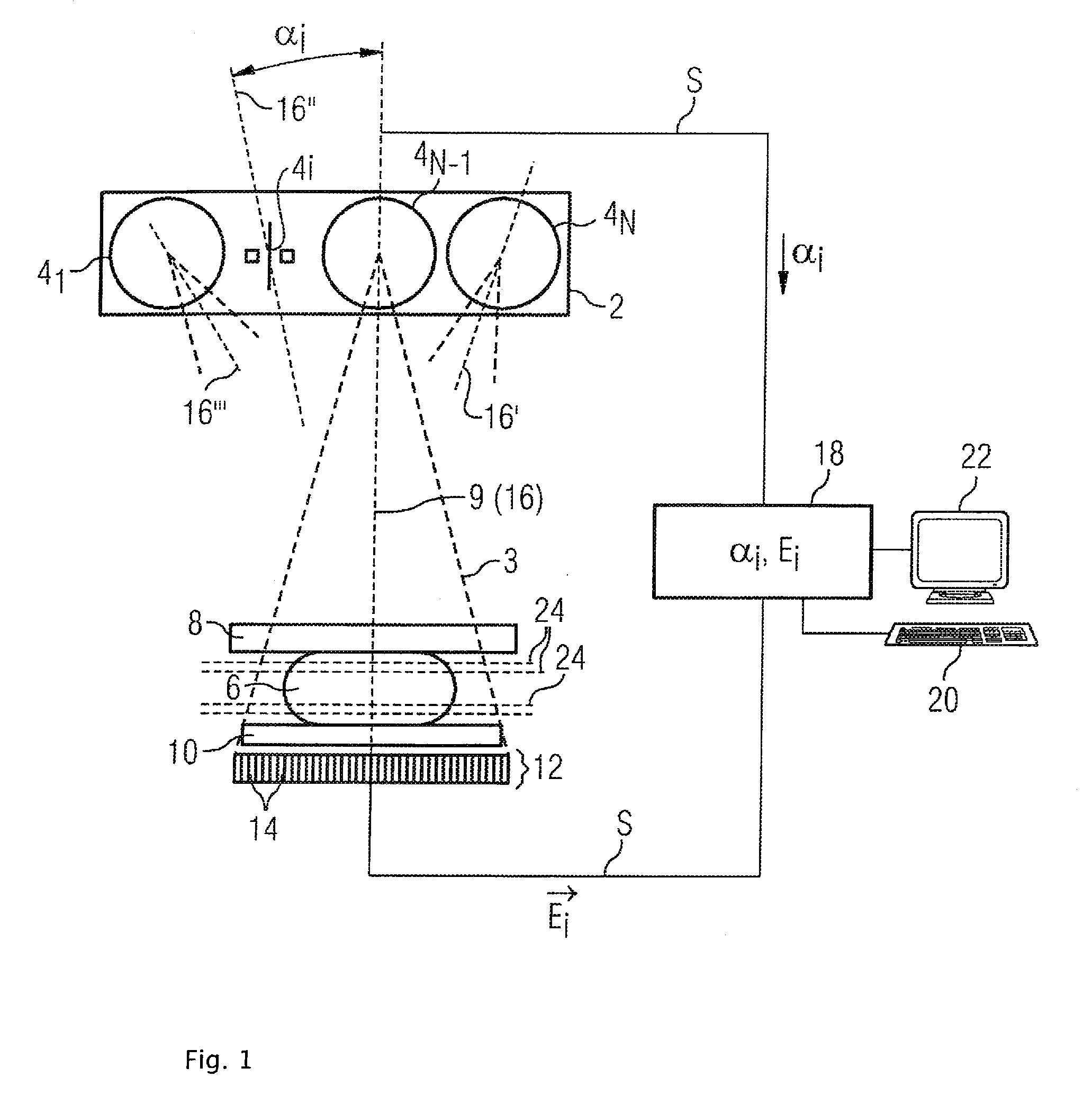Method and device for producing a tomosynthetic 3D x-ray image
a tomosynthetic and 3d x-ray technology, applied in tomography, instruments, applications, etc., can solve the problem of severely attenuated individual dose emitted by such emitters, and achieve the effect of increasing the dos
- Summary
- Abstract
- Description
- Claims
- Application Information
AI Technical Summary
Benefits of technology
Problems solved by technology
Method used
Image
Examples
Embodiment Construction
[0023]The FIGURE shows a mammography device with an x-ray source 2 that has a plurality of emitters 4. Shown is an x-ray source 2 with N emitters 41 through 4N. The individual emitters 4 are arranged in parallel in the manner of an array and generate x-rays 3 that expose an examination subject 6 (a female breast in the present case). The individual emitters 4 are arranged so that they expose the examination subject 6 from different angles α. The exposure direction 16″ of the i-th emitter 4i thereby encloses the angle αi with a surface normal 9. To adjust the exposure directions 16, 16′, 16″, 16″′, the emitters 4 can be arranged rotated slightly counter to one another in the x-ray source 2.
[0024]The examination subject 6 is fixed between a compression plate 8 and a bearing plate 10. An x-ray detector 12 that is composed of a number of individual detectors 14 in a matrix formation is located on the side of the examination subject 6 facing away from the x-ray source 2. The x-ray detect...
PUM
 Login to View More
Login to View More Abstract
Description
Claims
Application Information
 Login to View More
Login to View More - R&D
- Intellectual Property
- Life Sciences
- Materials
- Tech Scout
- Unparalleled Data Quality
- Higher Quality Content
- 60% Fewer Hallucinations
Browse by: Latest US Patents, China's latest patents, Technical Efficacy Thesaurus, Application Domain, Technology Topic, Popular Technical Reports.
© 2025 PatSnap. All rights reserved.Legal|Privacy policy|Modern Slavery Act Transparency Statement|Sitemap|About US| Contact US: help@patsnap.com


